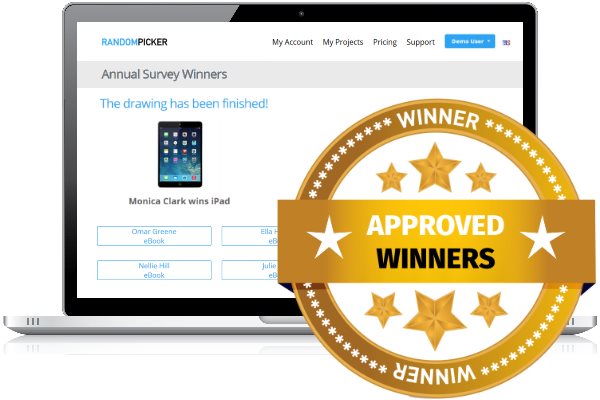Trusted platform
Winners: Random & Trusted.
RandomPicker helps organizers randomly select winners for contests, giveaways or raffles in a very transparent way. Learn more about our processes, anti-cheating measures and find the guide on how to check if the drawing was fair and unbiased.

How RandomPicker works
Anti-cheating measures for unbiased drawings
RandomPicker includes both technical and non-technical measures to detect suspicious activities. All our measures help increase trust in our community and drawing projects.
How to check the draw has been conducted correctly and without bias?
Go to the giveaway public record, it’s a unique page generated from RandomPicker after each drawing. Its address looks like https://app.randompicker.com/project-id . If you don’t have the link, contact the giveaway organizer, he will provide you with the public record link.
- Check the number of entries involved in the drawing and winner(s).
- Check the anonymized list of entries, look for suspicious duplicates or extreme weights of specific entries. Both duplicities and weights can happen if they are allowed by the competition rules.
- Check previous projects done by the same organizer. Several recent deleted draws with the same name might be suspicious. Note that test draws are quite common as organizers want to learn how RandomPicker works.
- Check whether you were involved in the draw using the full-text search on the bottom of the public protocol. Sometimes organizers import emails, IDs, or other identifiers instead of names. Look at the table of winners to learn what kind of identification is used. The organizer should provide you with your identifier so you can check your participation.